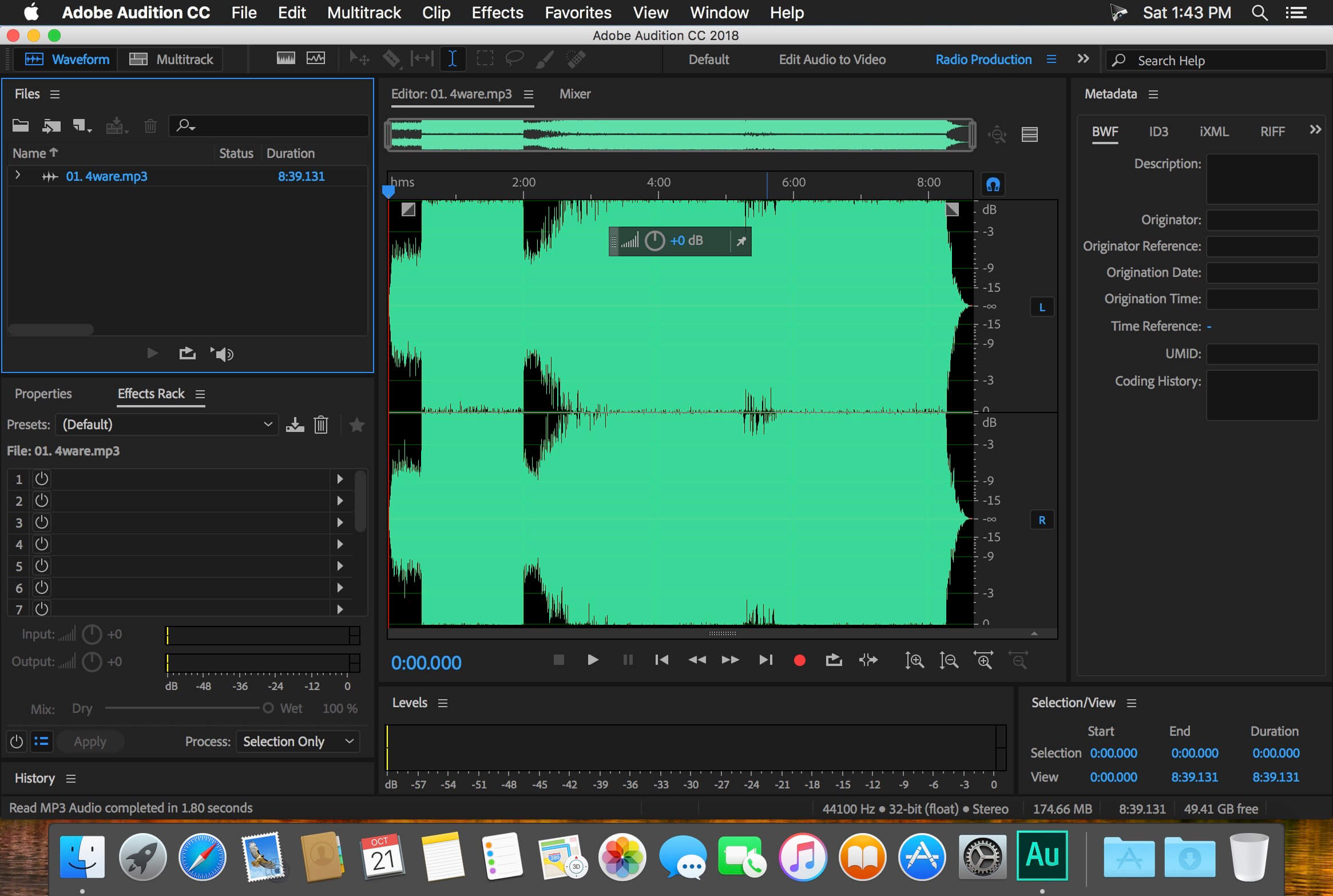

- Uses of adobe audition how to#
- Uses of adobe audition pro#
- Uses of adobe audition software#
- Uses of adobe audition professional#
Uses of adobe audition how to#
If you’re ready to dish out the amount and take the time to patiently learn how to use this program and set it up properly, it is a very trustworthy and reliable system. Where the drawbacks begin are at its value, as most users might not need all the top configuration this is capable of, and the fact that its integration with video is a bit wonky it only accepts very compressed video files. It works with every audio accelerator except Resolve’s accelerator.

It plays very smoothly at very high track counts (depending on your PC’s Ram, of course). It’s compatible with all the major hardware controller services its automation options are solid. The routing settings can be quite complicated, but for a reason, it is the only certified program to be able to do Dolby Atmos or 11.1 Surround, Binaural, or other complicated 3D sound output setups.
Uses of adobe audition pro#
Hundreds of tracks and the thousands of plugins that come with Pro Tools are already off the back really good. It has a snappy response and nearly unlimited possibilities when it comes to implementing plugins.

One of the great things about it too is that it loads all of the audio into RAM, so you’re not using any hard drive space. Their lowest tier Pro Tools Artist is only 9$ a month and is excellent for new musicians. This is the standard for many high-level music production products. Pro Tools Flex costs about 1000$/year, while Pro Tools Studio, their mid-priced tier, costs bout 32$ a month.

Their GUI is decent they have high-quality plugins, good EQ, 32-bit files, surround sound mixing, and are regularly updated.These two programs are mostly oriented towards mixing, mastering, and editing, more than beat making or strictly composing.Pro Tools is just not that ideal in my experience, whereas Adobe Audition has a great customer support.Pro Tools has no native cross-platform working pros, whereas Adobe Audition has Dynamic Linking, that works across the whole Adobe Suite.Pro Tools has a diverse plugin selection, whereas Audition is more focused on multiband compressors, slightly better EQ´ing, and noise cleaning plugins.Pro Tools has every single option and possibility you can think of, whereas Adobe Audition can route out to a 5.1 output mixing file.Pro Tools has dedicated hardware you can purchase and link up for your home studio, whereas Adobe Audition doesn´t, though it can work through third-party hardware.Pro Tools total track count reaches 768 tracks (although this means having several different licenses) whereas Adobe Audition can handle up to 256 tracks.Pro Tools’s most expensive tier costs 1000 dollars each year, whereas Adobe Audition is only 600$/year.The main differences between these Adobe Audition vs Pro Tools are: But sometimes we’re curious about a change, aren’t we? Main Differences between Adobe Audition vs Pro Tools Both are very valid programs in the end, and whatever program you know the best is usually the better option. I’ll break down the pros and cons of each program, where it shines and where it slumbers. But with 2022 upon us, is Adobe Audition a worthy competitor for Pro Tools? The most popular programs are After Effects, Premiere Pro and Lightroom. With the Adobe Suite on the rise, I feel that Audition is the less known element of the Suite. It also has more than a foot in the door in many companies that deal in sound design and sound editing for films and tv shows. Pro Tools has been an industry standard for many years at least as far as live recording sessions with musicians go.
Uses of adobe audition professional#
Both are very capable of delivering good results no matter what you are using them for, whether it be for film scoring, professional recording, sound editing, etc.
Uses of adobe audition software#
Adobe Audition vs Pro Tools are two of the most popular sound editing software or DAW’s on the market.


 0 kommentar(er)
0 kommentar(er)
